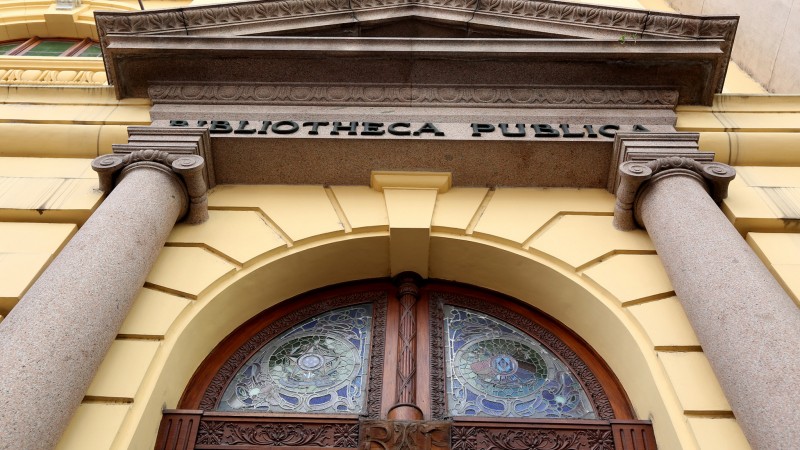Quality of life
Known for its quality of life, the State of Rio Grande do Sul has systematically presented one of the best national performances in the Human Development Index (HDI), according to the United Nations Development Program (UNDP). Supported by the continuous improvement in schooling, income and longevity indicators, more than 63% of the municipalities in Rio Grande do Sul have a high level of development (Atlas do Desenvolvimento Humano no Brasil, 2013), with 10 cities in the state being among the 100 with the highest human development in the country. According to the Atlas of Human Development, the Human Development Index of Rio Grande do Sul is 0.771.
With one of the highest life expectancies in the country, of 77.45 years for both sexes (DEE, 2018-2020), comparable to Croatia and Poland, the State has a wide network of health establishments, with Porto Alegre being a reference nationwide in medical services.

As a result of the contribution of multiple nationalities and ethnic groups representing all continents, which express themselves and mix here, the State also has a unique cultural wealth, which is reflected in various opportunities for culture and leisure throughout its territory.
The State has 592 museums (SEDAC/RS), the most important of which are the Iberê Camargo Foundation, the Ling Institute, the Júlio de Castilhos Museum, the Santander Porto Alegre Lighthouse, formerly called Santander Cultural, is a Brazilian cultural center maintained by the Banco Santander in a historic building in Porto Alegre, in Rio Grande do Sul, the Museu de Armas General Osório, the Museum of Art of Rio Grande do Sul , the Museum of Sacred Art and the Rio-Grandense Museum of Natural Sciences, in the Capital ; the Rincão da Lealdade Center for Gaucho Traditions Museum, with products, costumes and regional objects, in Caxias do Sul ; the Anthropological Museum of Ijuí ; the Historical Museum of Pelotas ; theRio Grande Oceanographic Museum ; the Vítor Bersani Historical Museum, in Santa Maria ; the Barão do Santo Ângelo Museum, in Rio Pardo ; the Farroupilha Museum, in Triunfo , housed in the former Farroupilha Government Palace; and the Visconde de São Leopoldo Colonial Museum, in São Leopoldo .
Porto Alegre, the capital of the Gauchos, hosts the largest visual arts show in Latin America every two years, the Mercosul Biennial . In twenty-four years of existence, the Fundação Bienal do Mercosul held twelve editions of the visual arts show, totaling 795 days of physical exhibitions open to the public and 137 days of virtual exhibitions, 74 physical exhibitions and 1 virtual exhibition, 6,061,698 visits , 4845 exhibited works, ephemeral urban interventions and 16 monumental works left for the city.

The State also has approximately 2 thousand libraries, the most important of which are located in Porto Alegre, the State Public Library , the Army Library, the State Legislative Assembly Library, the Stock Exchange Library, the Library of the Faculty of Law of the Federal University of Rio Grande do Sul and Anchieta College Library. There is also the oldest library in the State, in Rio Grande, the Biblioteca Rio-Grandense .

Tourism
The Capital was the host city of the 1950 and 2014 Football World Cups. For the 2014 Cup, the clubs prepared their stadiums in accordance with FIFA's world standards to receive visitors from all over the world. The two football clubs in the city also have titles of world football champions. These are the clubs, Sport Club Internacional and Grêmio Foot-ball Porto Alegrense . In addition to football, the state also has high-performance clubs that train Olympic athletes. It is one of the capitals that most attracts business tourism, it has also established itself as a stopping point for concert and show tours, in addition to promoting theater, literature and visual arts festivals. Porto Alegre, the capital, stands out for its intense nightlife and varied gastronomic options. There are bohemian neighborhoods with bars, restaurants and nightclubs, which are expanding like the 4th district. In the revitalization of the Guaíba waterfront, a renovation was carried out in the warehouses of the port to create the Emcadero Pier, a leisure place with gastronomic options and a beautiful sunset.
In terms of architecture, the city is characterized by preserving one of the largest historic centers in the country, with neoclassical and eclectic styles, mixed with Brazilian modernism. Its rural area, in the South Zone, offers large parks for nature tourism. Dozens of shopping centers, large parks and several squares complete the attractions of this metropolis in the geographic center of Mercosur, a hub for the business and events segment.
Rio Grande do Sul also has attractive regions such as the Serra – where Gramado is located, one of the best winter destinations in Brazil, and Vale dos Vinhedos – and Missões – where the Ruins of São Miguel das Missões tell the story of the conversion of indigenous peoples to Christianity by the Spanish Jesuits. Also noteworthy are the National Parks of Itaimbezinho and Aparados da Serra, with their ecotourism itineraries, and various regional festivals.
